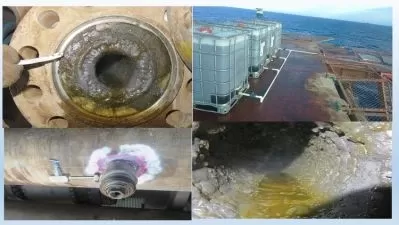Control Valve Sizing for Liquid Applications
Amr Mohyeldin
3:31:00
Description
Size and Select Control Valves Appropiately,Calculate Valve Authoirty, Turndown, Pressure Drop and Avoid Cavitation
What You'll Learn?
- Size and Select Control Valves For Liquid Applications
- Understand Valve Flow Coefficient (Cv), Flow Capacity at Different Pressure Drops, and Corrections for Viscosity and Specific Gravity
- Convert Valve Flow Coefficient (Cv) to Resistance Coefficient (K)
- Analyze Inherent Valve Characteristic Curves With Examples
- Differentiate Between Inherent Valve Characteristics and Installed Valve Characteristic Curves
- Assess Control Valve Authority and Its Impact on Pressure Drop and System Head Curves
- Evaluate the Relationship Between Control Valve Open Percentage and System Head Curves
- Analyze the Impact of Control Valve and Operational Parameters on System Head Curves in Pump Applications
- Understand Control Valve Rangeability, Turndown Ratio, and Their Impact on Control Valve Sizing With Examples
- Apply Control Valve Sizing Heuristics Effectively
- Learn Reasons for Common Control Valve Sizing Issues Like Cavitation and Flashing
- Learn and Apply Equations to Figure if Cavitation or Flashing Exists in Control Valves
- Work Through an Example to Check for Cavitation and Flashing in Control Valves
- Learn Additional Parameters for Selecting the Appropriate Control Valve
Who is this for?
What You Need to Know?
More details
DescriptionChapter 1: Resistances in Series
Introduction to Resistances in Series
Pump Sizing Roadmap
Chapter 2: Valves
Flow Coefficient (Cv)
Cv Corrections for Viscosity and Specific Gravity
Cv and Flow Capacity at Different Pressure Drops
Converting Cv to Resistance Coefficient (K)
Inherent Valve Curve
Example of Inherent Valve Curve
Introduction to Valve Authority
Chapter 3: Valve Authority & Installed Characteristic Curve
Reviewing Valve Authority Definitions
Valve Authority vs System Head Plot
Inherent vs Installed Characteristic Curve
Example: Estimating Pump Curve, System Curve, Valve Authority, and Installed Valve Characteristic Curve at Different Valve Openings
Expressing Valve Open Percentage vs System Head Mathematically
Impact of Operating Parameters on System Head Curve
Chapter 4: Rangeability & Turndown
Valve Rangeability
Example of Valve Rangeability
Valve Turndown
Chapter 5: Rules of Thumb for Sizing a Valve
Key Rules of Thumb for Valve Sizing: Includes Heuristics for Different Valve Openings at Different Operating Flowrates, Liquid Velocity, and Recommended Control Valve Pressure Drop
Chapter 6: Challenges With Sizing Valves
Common Sizing Issues
Cavitation and Flashing: What Are They, Why Are They a Problem, and How to Check if They Are Present
Example of Checking for Cavitation and Flashing in a Control Valve
Chapter 7: Valve Selection Considerations
Valve Selection Considerations: Includes a High-Level Guide on the Typical Parameters Required for Selecting a Control Valve
Who this course is for:
- Engineers In-Training, Recent College graduates, Engineering Students
- Chemical, Process, Petroleum Engineers
- Piping, Plant Engineers
- Mechanical Engineers
- Design Engineers
- Maintenance Technicians
- Plant Operators
- Civil Engineers
- Safety Engineers
Chapter 1: Resistances in Series
Introduction to Resistances in Series
Pump Sizing Roadmap
Chapter 2: Valves
Flow Coefficient (Cv)
Cv Corrections for Viscosity and Specific Gravity
Cv and Flow Capacity at Different Pressure Drops
Converting Cv to Resistance Coefficient (K)
Inherent Valve Curve
Example of Inherent Valve Curve
Introduction to Valve Authority
Chapter 3: Valve Authority & Installed Characteristic Curve
Reviewing Valve Authority Definitions
Valve Authority vs System Head Plot
Inherent vs Installed Characteristic Curve
Example: Estimating Pump Curve, System Curve, Valve Authority, and Installed Valve Characteristic Curve at Different Valve Openings
Expressing Valve Open Percentage vs System Head Mathematically
Impact of Operating Parameters on System Head Curve
Chapter 4: Rangeability & Turndown
Valve Rangeability
Example of Valve Rangeability
Valve Turndown
Chapter 5: Rules of Thumb for Sizing a Valve
Key Rules of Thumb for Valve Sizing: Includes Heuristics for Different Valve Openings at Different Operating Flowrates, Liquid Velocity, and Recommended Control Valve Pressure Drop
Chapter 6: Challenges With Sizing Valves
Common Sizing Issues
Cavitation and Flashing: What Are They, Why Are They a Problem, and How to Check if They Are Present
Example of Checking for Cavitation and Flashing in a Control Valve
Chapter 7: Valve Selection Considerations
Valve Selection Considerations: Includes a High-Level Guide on the Typical Parameters Required for Selecting a Control Valve
Who this course is for:
- Engineers In-Training, Recent College graduates, Engineering Students
- Chemical, Process, Petroleum Engineers
- Piping, Plant Engineers
- Mechanical Engineers
- Design Engineers
- Maintenance Technicians
- Plant Operators
- Civil Engineers
- Safety Engineers
User Reviews
Rating
Amr Mohyeldin
Instructor's Courses
Udemy
View courses Udemy- language english
- Training sessions 25
- duration 3:31:00
- Release Date 2024/12/04










